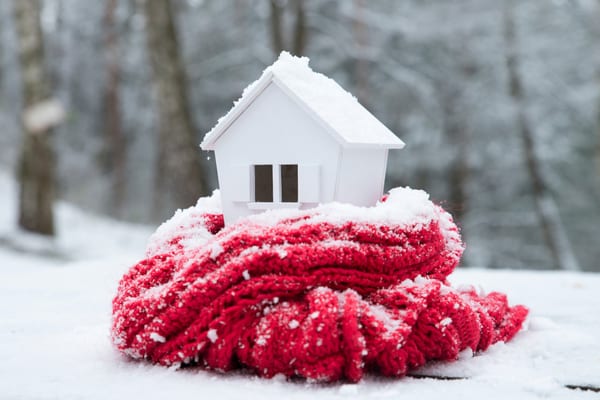When the dreaded cold months of winter arrive, it means many homeowners are put in a difficult conundrum to keep their homes warm without breaking the bank, and staying warm is becoming increasingly expensive.
It’s a good news/bad news situation. The National Energy Assistance Directors Association (NEADA) estimates that the average cost of home heating in 2024 will be $868, which is a 9.5% decrease from the previous winter. However, heating costs are still much higher than before the pandemic, and 16.5% higher than the winter of 2020-2021.
Here are some other NEADA cost estimates for home heating in 2024:
- Electricity: Costs are projected to increase by 13.6% to $1,208.
- Propane: Costs are projected to increase by 7.3% to $1,442.
- Natural gas: Costs are projected to increase by 7.2% to $644.
- Oil: Costs are projected to increase by 6.1% to $1,963.
NEADA also estimates that:
- Utility debt will increase to almost $17.4 billion, spread across 17.4 million electric and 11 million natural gas households.
- Utility shut-offs will increase by 300,000 households, to 3.5 million in total, by the end of 2024.
- Roughly one out of six households will be behind on paying their utility bills.
- NEADA has asked Congress to increase funding for the Low Income Home Energy Assistance Program (LIHEAP) from $4.1 billion to $6.1 billion
Okay, so that’s the bad news. The good news is that resourceful homeowners can find plenty of ways to cut down on costs. As USA Today reports, here are some tips from experts on how to stay warm this winter while still reducing your heating bills.
Have your HVAC Inspected
A heating system that’s running efficiently saves money. That means, the pricey cost of paying for a professional to come to your home and inspect your unit (anywhere from $150 to $500, Consumer Reports estimates) can pay off in the long run.
Climate-friendly heat pumps, for instance, can use up to 25% less fuel when they’re well-maintained, according to the U.S. Department of Energy. Inspections include replacing dirty filters and checking for safety issues like carbon monoxide leaks.
Get an energy efficient audit
An energy efficient audit could be a great way for homeowners to find where their homes heating and cooling efficiency is lacking, Narayanamurthy said.
Trained energy assessors can evaluate homes for issues like insufficient insulation or a heating system that might warrant replacement and then develop a plan for homeowners to address issues and lower energy bills.
The Home Performance with Energy Star program, a collaboration between the Department of Energy and and the Environmental Protection Agency, matches consumers in 20 states with reputable home performance contractors for assessments.
Check for tax incentives and rebates
If this all still sounds expensive, Narayanamurthy recommends you consider taking advantage of available rebates and tax credits through the Department of Energy.
Due to the recently approved Inflation Reduction Act, now may be a great time to install energy efficient products and replace heating systems that are 15 years old or older. Funding is available for all kinds of other upgrades as well, from doors, to windows, and to insulation. More information is available at energysaver.gov.
More steps to take to lower your heating costs
Experts offer a variety of other tips that, altogether, could cut down on cold air coming into your home and reduce the workload on your heating unit.
- Weather-stripping doors and improving insulation helps to keep warm are in and cold air out.
- Draft air coming in through windows may mean they’re in need of maintenance – or replacement altogether. But before getting new windows, homeowners can try to caulk them to prevent air leaks. If replacements are needed, Consumer Reporters recommends considering low-emissivity (low-e) storm windows, which are coated to help keep the warmth inside.
- Cold air creeping in at the bottom of doors? A lengthy draft stopper (or even a rolled-up towel) is an inexpensive way seal it off.
—
Photo Credit: Kishiva / Shutterstock.com
